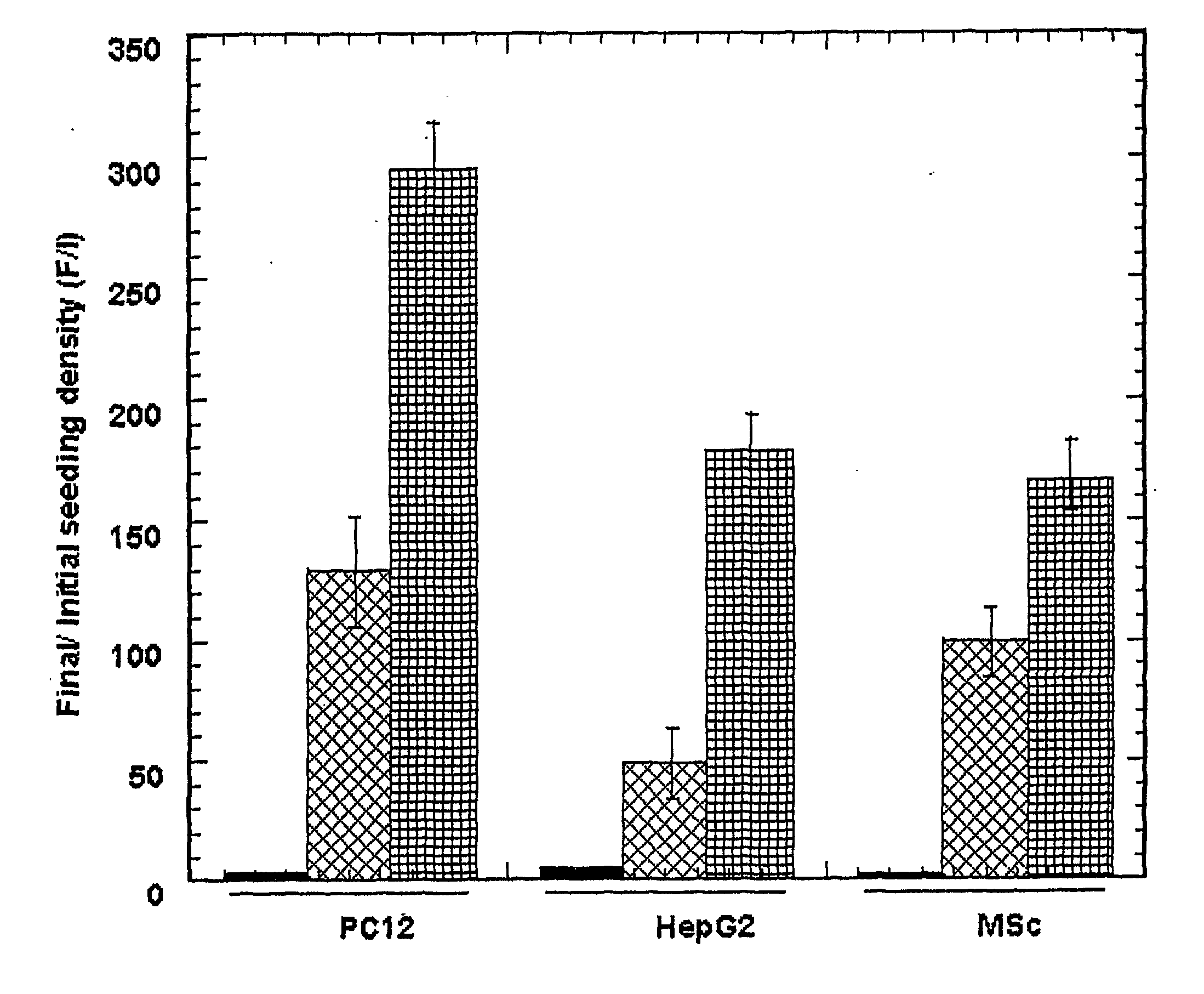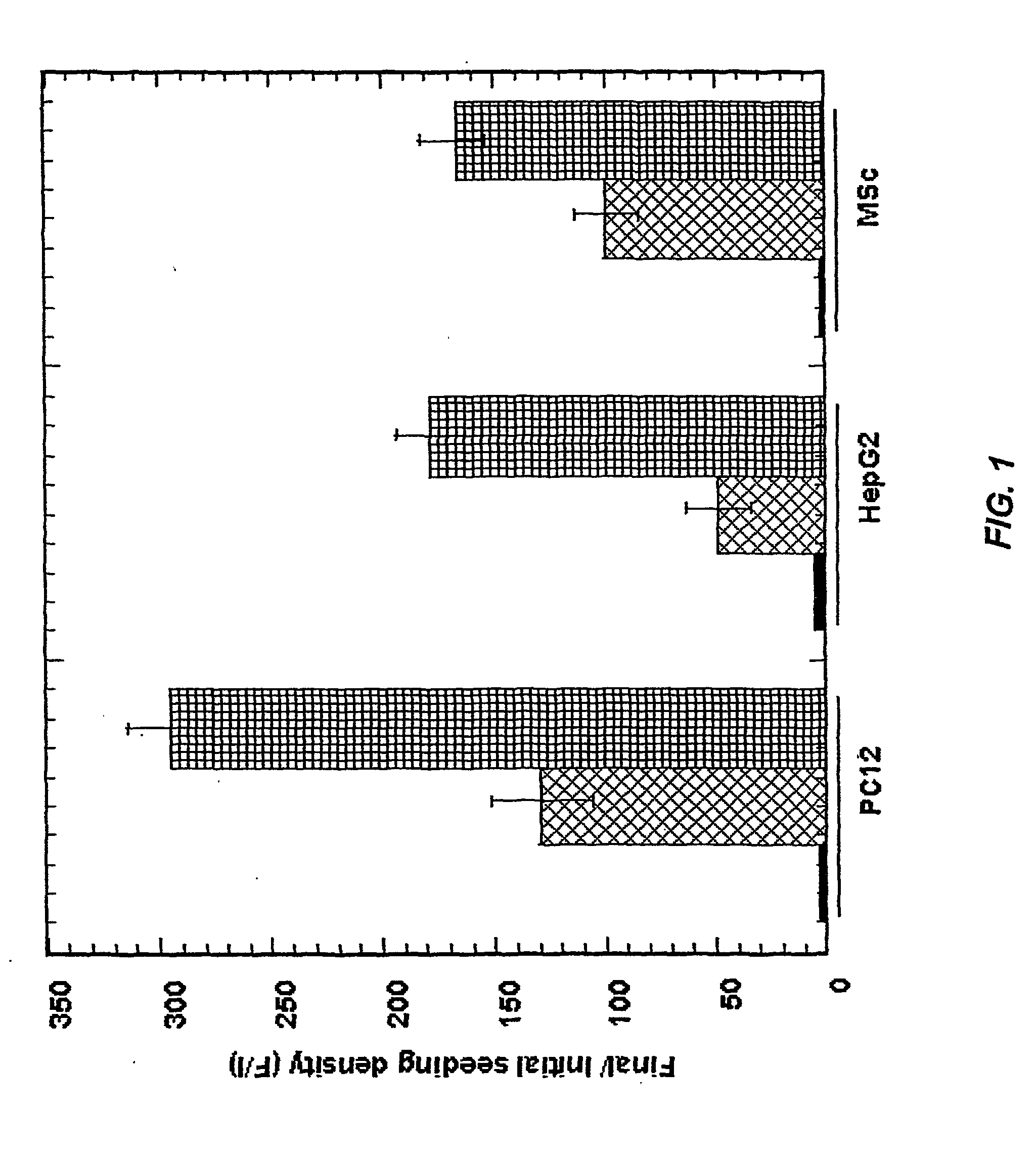Non-disruptive three-dimensional culture and harvest system for anchorage-dependent cells
a three-dimensional culture and anchorage-dependent technology, applied in the field of cell culture, can solve the problems of limited space in the culture vessel, limiting the suitability of substrates for cell attachment, and severely limited the usefulness of cells in therapeutic applications
- Summary
- Abstract
- Description
- Claims
- Application Information
AI Technical Summary
Benefits of technology
Problems solved by technology
Method used
Image
Examples
Embodiment Construction
[0083] The following example is illustrative of preferred aspects of the invention and should not be construed to limit the claims in any way. The example illustrates preparing a three-dimensional cell culture with hepatocyte, PC12, and MSc cells. All reagents were purchased from Sigma-Aldrich unless otherwise indicated.
[0084] Ter-polymer Preparation
[0085] Ter-polymer of methacrylic acid (MAA), 2-hydroxyethyl methacrylate (HEMA), and methyl methacrylate (MMA) was synthesized by solution polymerization in 2-propanol using 2,2'-azobisisobutyronitrile (AIBN) as initiator. The monomers were distilled under nitrogen at reduced pressure. The polymerization was performed with an initiator concentration of 0.1 mol % of monomers under nitrogen with a magnetic stirrer at 78.degree. C. in an oil bath. The molar feed ratio of MAA, HEMA, and MMA was fixed at 25:25:50 or other ratios as desired and the ratio of total monomer to solvent at 1:6 (W / V). The reaction was allowed to proceed for overnig...
PUM
| Property | Measurement | Unit |
|---|---|---|
| thickness | aaaaa | aaaaa |
| concentration | aaaaa | aaaaa |
| concentrations | aaaaa | aaaaa |
Abstract
Description
Claims
Application Information
 Login to View More
Login to View More - R&D
- Intellectual Property
- Life Sciences
- Materials
- Tech Scout
- Unparalleled Data Quality
- Higher Quality Content
- 60% Fewer Hallucinations
Browse by: Latest US Patents, China's latest patents, Technical Efficacy Thesaurus, Application Domain, Technology Topic, Popular Technical Reports.
© 2025 PatSnap. All rights reserved.Legal|Privacy policy|Modern Slavery Act Transparency Statement|Sitemap|About US| Contact US: help@patsnap.com



